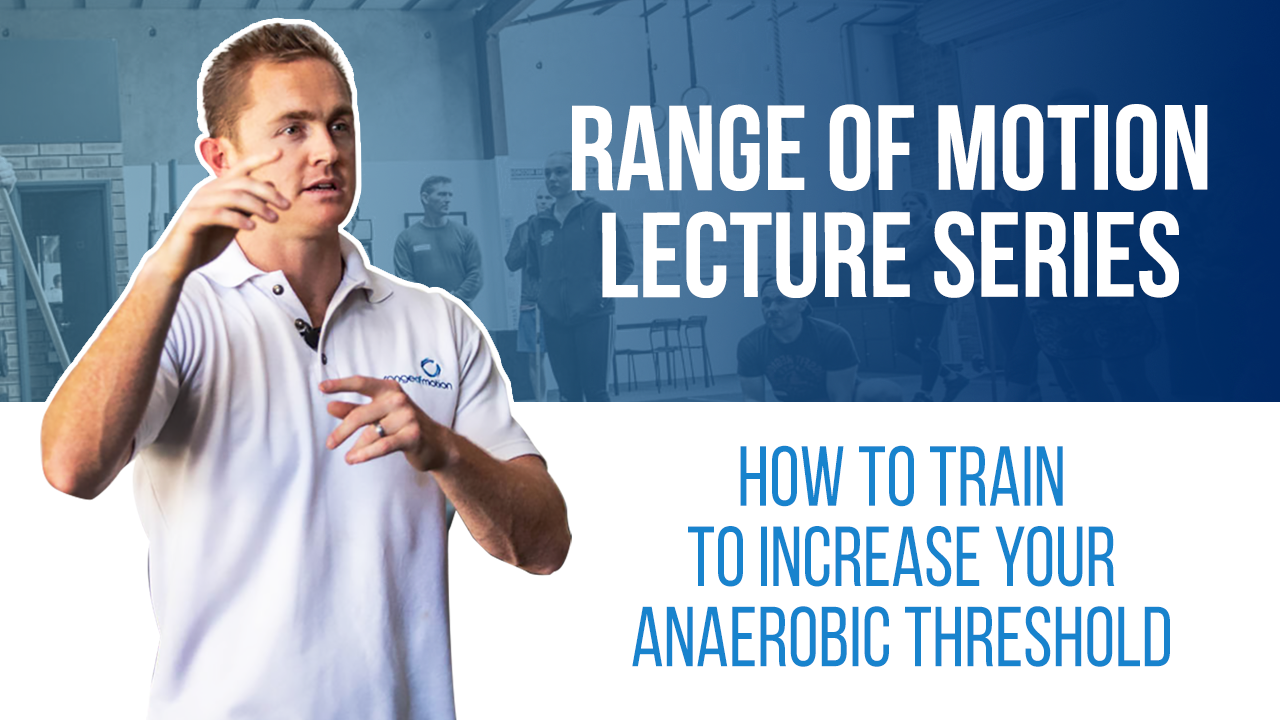Transcribed from video:
– This threshold is where I think our real benefit is. For a general crossfit sort of population. Because this is the point where we are transitioning from aerobic to anaerobic. Again, let me take you through an example of this. So picture yourself at the start line on a 400 metre running track. Everyone got that? The gun goes, and you start to walk. You walk faster, you go to a light jog, this is aerobic. It’s an aerobic energy system, which we’ve talked about here. As you start to work a little harder, you go from a jog into a run. We’re now starting to head towards this lactate threshold. The acid rain is starting to fall into the tank. We’re starting to produce these hydrogen ions in the body. Then, you step it up, and now you’re starting to work hard. Now we’re talking like 400 metre run pace. We start to get towards your anaerobic threshold. Because at that intensity, there is more acid rain, hydrogen ions, entering this rainwater tank than this tap can remove. It’s still madly trying to remove it, but it fills up, it fills up, it fills up, it fills up, it overflows, it inhibits the production of energy, that’s you hitting the wall. That’s that sprint where you’re telling your muscles to go, but they will not. Because if they could, you would die, because you’d be poisoned by the acid rain. Okay? What we’re looking to do here, and the reason I believe this is so important, is because this is the point where we can exercise at a high intensity, as intense as possible, for an extended period of time, without losing our speed. And this is our maximum sustainable pace. Three very important words, and we’ll talk about them when it comes to the strategy workshop that we’ll be covering. Maximum sustainable intensity. The highest pace at which you can work without hitting the wall. Very important concept. Everything strategy-based boils down to that. So we’re looking to increase the threshold at which these hydrogen ions accumulate faster than they can be removed. Making the tank bigger, making a bigger tap, turning the tap on more to get the acid out of the tank. And this allows you to build, like I talked about, your maximum sustainable pace. The energy comes from the glycolytic energy system. The work time now is 15 to 30 seconds. So you can see that gives you some clues as to the intensity that we should be working at here. ‘Cause you push that intensity higher, it allows us to then work at a higher rate. 15 to 30 seconds, your work-to-rest ratio now increases, 1:3 to 1:5, so again, if you’re doing 15 seconds of work, a 1:5 ratio, you’re looking at about a minute 15 worth of rest time there. And that minute 15 worth of rest time should be enough for you to recover and feel like you can go at the same intensity again. If your subsequent intervals are dropping off in intensity, it means that you’re not going to get the effect to improve your anaerobic threshold. Again, we want an active recovery type here, to buffer those hydrogen ions out of the body. Intensity is now in eight to nine. That can be, it’s obviously a subjective measure. So, a really good way to talk about this intensity is to think of this as the fastest that you can possibly move without feeling like your muscles are on fire. And you guys who are pretty in tune with what your bodies can handle, you will know that sitting at 44 Ks an hour on an air bike, you can maintain, but if you go to 45, you’re going to hit the wall. Yeah, you’ll find that point where it’s a real fine balance, if you’ve got that good self-awareness of ability, a real fine balance. Too much, you fall apart. Too little, and you’re not working at your maximum sustainable pace. All right, that’s the intensity that we’re looking for there. Total training time, lower volume than what we were talking about with a lactate threshold. Okay, intensity is high, therefore your volume starts to drop a little bit.





